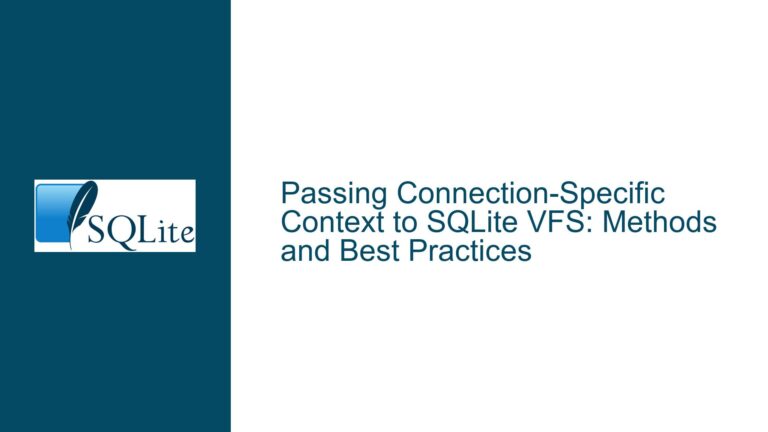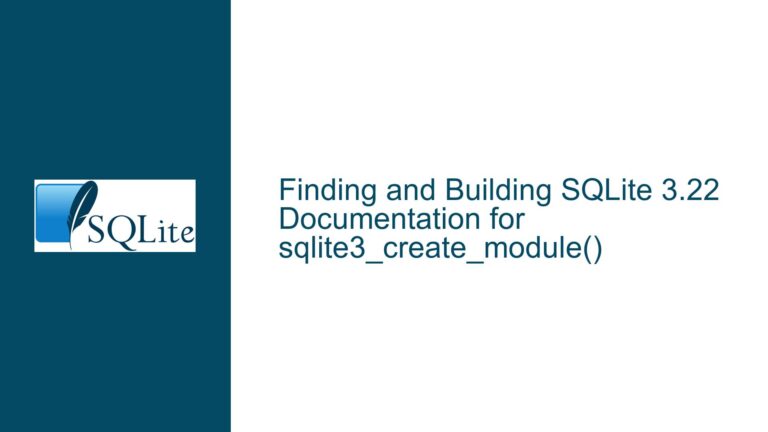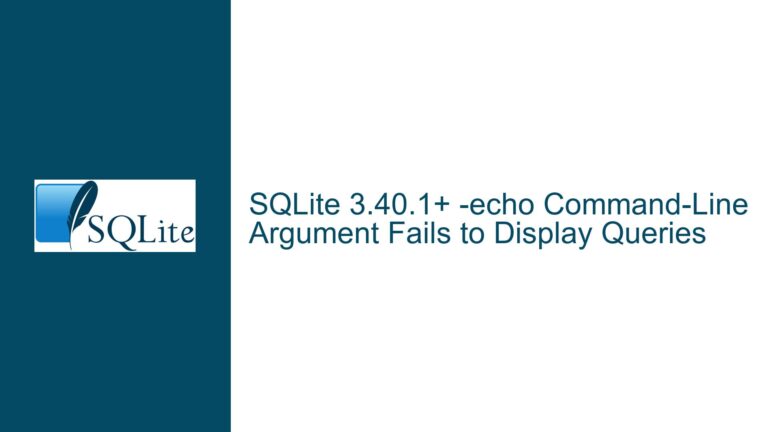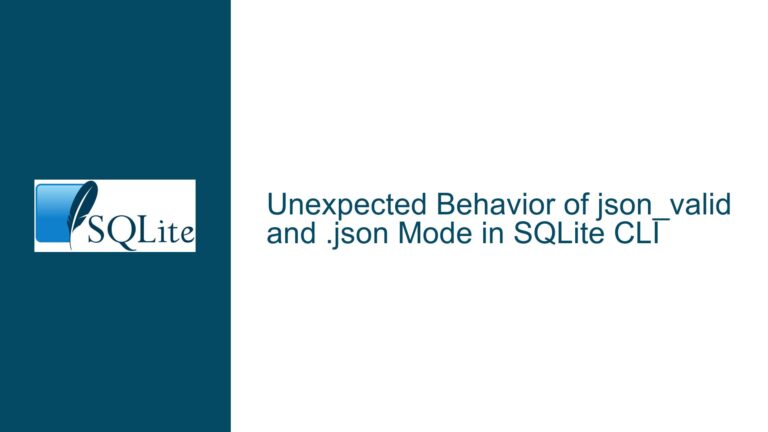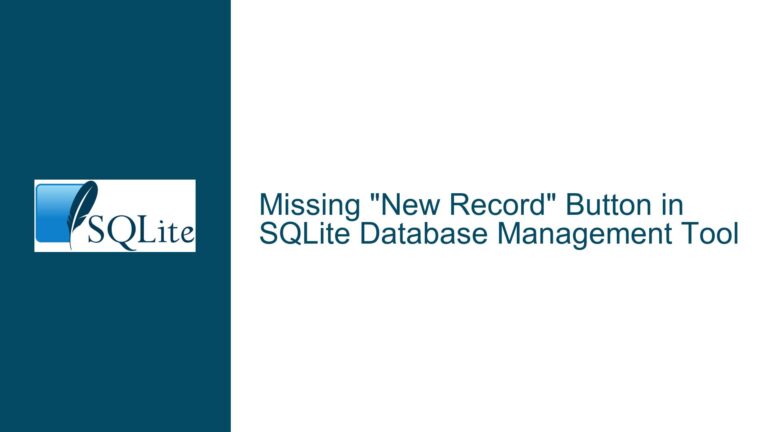Why Triggers Are Not Allowed on SQLite Virtual Tables
The Nature of Virtual Tables and Trigger Limitations in SQLite
Virtual tables in SQLite are a powerful feature that allows developers to define custom table-like structures backed by external data sources or algorithms. Unlike traditional tables, virtual tables do not store data directly within the SQLite database file. Instead, they rely on user-defined implementations to fetch, manipulate, and present data dynamically. This design introduces unique challenges when it comes to integrating SQLite’s standard features, such as triggers.
Triggers, on the other hand, are database objects that automatically execute specified SQL statements in response to certain events, such as INSERT, UPDATE, or DELETE operations on a table. They are commonly used to enforce business rules, maintain data integrity, or automate repetitive tasks. However, SQLite explicitly disallows the creation of triggers on virtual tables. This restriction is not arbitrary but stems from fundamental architectural and operational differences between virtual and traditional tables.
The core issue lies in the fact that SQLite has no direct control over the data managed by virtual tables. Since the data is not stored within the database file and is instead provided by external implementations, SQLite cannot guarantee the consistency or predictability required for triggers to function reliably. For example, if a trigger were to fire on an INSERT operation into a virtual table, SQLite would have no way of ensuring that the underlying data source adheres to the changes implied by the trigger. This disconnect between SQLite’s internal mechanisms and the external data management of virtual tables makes triggers inherently incompatible with virtual tables.
The Challenges of Implementing Triggers on Virtual Tables
One of the primary challenges of implementing triggers on virtual tables is the lack of transactional control over the underlying data. In traditional tables, SQLite manages transactions explicitly, ensuring that changes made by triggers are atomic, consistent, isolated, and durable (ACID). However, virtual tables often rely on external systems or algorithms that may not support transactional semantics. This mismatch can lead to data inconsistencies or unexpected behavior when triggers attempt to modify data that is outside SQLite’s control.
Another challenge is the potential for infinite recursion or circular dependencies. For instance, if a trigger on a virtual table attempts to modify the same table that triggered it, the operation could result in an endless loop. While SQLite could theoretically implement safeguards to prevent such scenarios, the complexity of managing these edge cases would significantly increase the maintenance burden and risk of bugs.
Additionally, virtual tables often present data in a way that is not directly modifiable. For example, a virtual table might aggregate data from multiple sources or compute values on the fly. In such cases, the concept of "inserting" or "updating" data may not even apply, making it unclear how triggers should behave. This ambiguity further complicates the implementation of triggers on virtual tables.
Workarounds and Alternative Approaches for Enforcing Data Integrity
While triggers are not supported on virtual tables, there are several alternative approaches for enforcing data integrity and automating tasks. One common workaround is to use views in combination with INSTEAD OF triggers. A view is a virtual table defined by a SQL query, and INSTEAD OF triggers allow you to define custom behavior for INSERT, UPDATE, and DELETE operations on the view. By creating a view that mirrors the virtual table and defining INSTEAD OF triggers on the view, you can achieve similar functionality to triggers on the virtual table itself.
For example, suppose you have a virtual table virtual_data and want to enforce a rule that prevents invalid data from being inserted. You could create a view virtual_data_view that selects all columns from virtual_data and define an INSTEAD OF INSERT trigger on the view. The trigger would validate the incoming data and either raise an error or perform the necessary modifications before passing the data to the underlying virtual table.
Another approach is to use application-level logic to enforce data integrity. Since SQLite is an embedded database, it runs within the same process as your application code. This tight integration allows you to implement custom validation and automation logic directly in your application, bypassing the need for triggers altogether. For instance, you could use a library or framework to intercept database operations and perform the necessary checks or modifications before they reach the virtual table.
In cases where you need to monitor changes to a virtual table, such as an FTS5 index, you can use SQL queries to detect modifications indirectly. As suggested in the discussion, querying specific columns or blocks from the virtual table’s underlying data structures can provide insights into whether the data has changed. While this approach requires additional effort and may not be as efficient as triggers, it offers a viable solution for scenarios where triggers are not available.
In conclusion, the restriction on triggers for virtual tables in SQLite is a deliberate design choice driven by the unique characteristics and challenges of virtual tables. While this limitation may seem inconvenient at first, understanding the underlying reasons and exploring alternative approaches can help you achieve your goals effectively. By leveraging views, application-level logic, and creative querying techniques, you can enforce data integrity and automate tasks in ways that are compatible with SQLite’s architecture.

